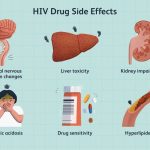Contents
Is Eating SCOBY Good for You and How Do You Make It?
SCOBY, short for symbiotic culture of bacteria and yeast, provides insoluble fiber and probiotics. You can easily make it at home with a simple recipe.
SCOBYs are used to create fermented foods and beverages like kefir and kombucha. You can purchase a SCOBY online, make one from scratch, or obtain a sample from a friend to grow your own.
Yes, you can eat SCOBYs, although they may not look or taste appealing due to their slimy texture. They contain bacteria and yeast cultures that contribute to the unique flavor and health benefits of kefir or kombucha.
Eating a SCOBY: How-to Guide
Many people repurpose extra SCOBYs to make delicious treats. Since the typical texture of SCOBY is unappetizing for most, there are creative ways to use it. Here are some ideas:
SCOBY jerky
Cut SCOBY into strips, season to taste, and dehydrate it in a dehydrator or in the oven with the pilot light on, covered with parchment paper and a towel. This results in a jerky-like substance.
SCOBY fruit leather
Puree fruit and add SCOBY. Dehydrate the mixture to create fruit leather.
SCOBY smoothie
Add SCOBY to smoothies for a probiotic boost. Blend it with fruit and freeze to make SCOBY popsicles.
Benefits of Eating SCOBY
Eating SCOBY provides several health benefits:
Insoluble fiber
SCOBY is rich in insoluble fiber, which aids digestion, reduces the risk of colon-related conditions, and promotes regular bowel movements. Other high-fiber foods include wheat cereals, carrots, tomatoes, and celery.
Probiotics
SCOBY and kombucha contain probiotics, such as lactobacillus, which enhance the immune system, aid in digestion, and may prevent digestive problems, yeast infections, and bacterial vaginosis. Probiotics are also found in yeast, among other sources.
Acetic acid
The fermentation process produces acetic acid, which has antibacterial properties effective against bacteria like E. coli, Staphylococcus aureus, Shigella, Yersinia enterolitica, and Salmonella.
How to Make SCOBY
There are three methods to obtain a SCOBY. You can make one from scratch, purchase online, or get extra SCOBY from a friend.
Making SCOBY from scratch
To make a kombucha SCOBY, prepare sugar, black tea, water, and unflavored kombucha. Boil water, brew tea, and add sugar to make sweet tea. Let it cool, then mix it with premade kombucha in a glass jar. Cover the jar with a porous cloth and secure with a rubber band. Store at room temperature for about two weeks to grow a SCOBY.
How to Use SCOBY for Kombucha
The process of making kombucha is similar to making SCOBY. You will need sugar, water, kombucha, black tea, and the SCOBY. Boil water, add sugar, and mix for five minutes. Remove from heat, add tea bags, cover, and let it steep for 15 minutes. Remove the tea bags and let the mixture cool. Pour it into a glass jar, add kombucha, and place the SCOBY on top. Cover with a porous cloth and secure with a rubber band. Store in a room-temperature area without direct sunlight for 6 to 10 days. Once brewed to your liking, remove the SCOBY and one cup of kombucha for future use.
How to Care for Your SCOBY
Since SCOBY is alive, it requires care. To feed it, prepare cold tea with black tea, sugar, and water. Let the tea cool before adding it to the SCOBY. When using part of the SCOBY to make a new batch of kombucha, replenish it with cold brewed sweet tea. Unused SCOBY can be composted, added to animal feed, mixed with broth as a dog treat, or used as fertilizer.
References:
BMC Complementary Medicine and Therapies: "Hypoglycemic and antilipidemic properties of kombucha tea in alloxan-induced diabetic rats."
Cambridge Dictionary: "scoby."
Centers for Disease Control and Prevention: "Yersinia enterocolitica (Yersiniosis)." "Shigella – Shigellosis."
Cleveland Clinic: "Acidophilus," "What’s the Difference Between Soluble and Insoluble Fiber?"
Foodprint: "Keep Your Extra Scoby From Going to Waste with These Recipes & Ideas."
Food microbiology: "Sequence-based analysis of the bacterial and fungal compositions of multiple kombucha (tea fungus) samples."
Frontiers in Microbiology: "Antimicrobial and Probiotic Properties of Yeasts: From Fundamental to Novel Applications."
Helpguide: "High-Fiber Foods."
Journal of Agriculture and Food Chemistry: "Kombucha fermentation and its antimicrobial activity."
Mayo Clinic: "E. coli," "Staph infections."
Minnesota Department of Health: "Causes and Symptoms of Salmonellosis."
Permaculture Research Institute: "Permaculture and Kombucha: The Ethics of Scoby."
Riordan Clinic: "How to Make Kombucha at Home."


